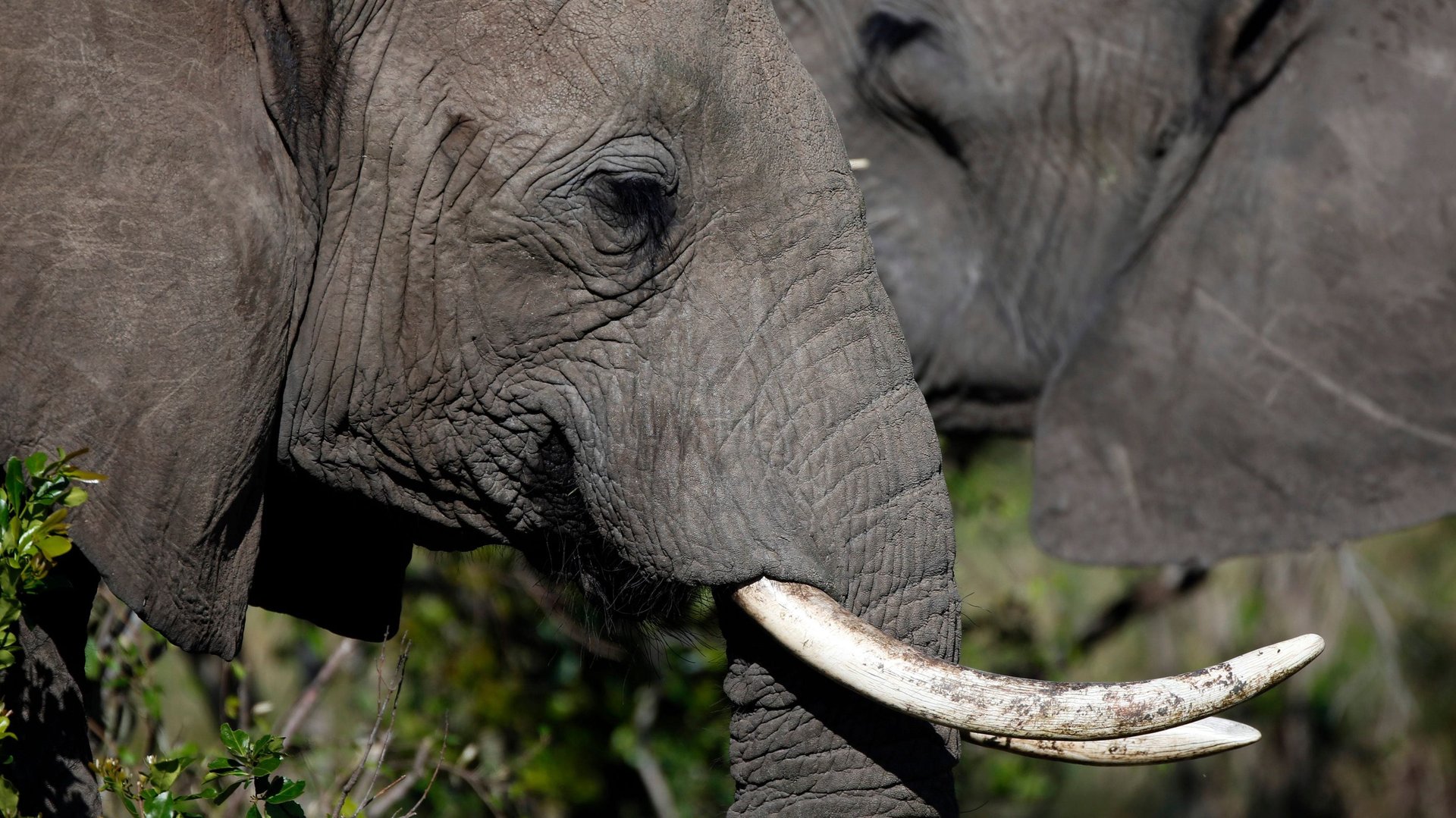Scientists identified three massive ivory poaching cartels in Africa using genetics
When law enforcement agents in African countries uncover a hidden port container of elephant tusks, it’s only partially satisfying.


When law enforcement agents in African countries uncover a hidden port container of elephant tusks, it’s only partially satisfying.
On the one hand, they’ve found an illegal shipment in the 1% to 2% of containers they can inspect, and they can likely find at least one person involved in the crime. On the other, the shipment has left them with more questions than answers: They have no idea where these elephant tusks came from, or who is the criminal mastermind behind the network of individuals working to illegally sell ivory, often in Vietnam or the Middle East. Without knowing where to increase park ranger supervision or whom to target for investigations, it’s highly likely that the poaching will continue and endangered African elephant populations will dwindle.
But that’s where science can help: Taking DNA samples from intercepted ivory shipments can reveal the origin of killed elephants, which helps paint a larger picture of the trafficking supply chain. In 2015, Sam Wasser, a zoologist at the University of Washington, and his team showed (paywall) that this was possible to find poachers’ favorite hunting hotspots this way, within about 300 km (186 miles) of where elephants have roamed.
Wasser and a team of researchers working with a lab in Kenya and a wildlife park in Malaysia have put this technique to use, locating three large trafficking cartels in Africa—one in Kenya, one in Tanzania, and one in the Republic of the Congo. Their work was published (paywall) in the journal Science Advances on Sept. 19.
“The tools in this new paper link individual trafficking cartels to multiple shipments and each other,” Wasser said in a press conference.
The poaching network is complex and multi-layered. A handful of skilled hunters may kill elephants for their tusks in disparate, remote areas and then carry them to dealers, who may sell larger and larger bundles to a single cartel. Often, these shipments will leave their country of origin and travel to a different city with a port. There, the ivory may be concealed in wood, beans, parts of machines, quartz, or even fertilizer, according to the Environmental Investigation Agency. It’s exceedingly difficult to link a particular shipment to a particular cartel director because the latter covertly changes locations so many times.
What law enforcement officers really need is something that ties all these pieces together. “Genetic testing of tusks allows investigators to leverage data from both ends of the supply chain to glean insight into the aggregation process itself,” says Ben Spevack, an analyst at the Center for Advanced Defense Studies in Washington DC who specializes in wildlife tracking. Spevack was not involved in the current study.
Wasser’s team sampled ivory taken from 38 large seizures—the kind that makes up the majority of the illegal ivory trade—in Africa and Malaysia, a common layover spot for shipments making their way to Asia, between 2006 and 2015. After analyzing the genes of these tusks, they found that 26 of the seizures contained genetically similar tusks. This means that at some point, the pair of tusks from a single killed elephant had been separated and put into different shipments that were likely all managed by the same cartel. The team also used this information about where these seizures were made and where the tusks originated to show paths of travel. Looking at repeating paths—as well as similar ways of hiding shipments—led the team to three major shipping hotspots.
“The hope is that the data can help strengthen the case against the cartel and tying them to the multiple large ivory seizures,” Wasser said. A representative from the US Department of Homeland Security is working with his team to help African law enforcement explore ways to use these genetic tools.
At the moment, smuggling ivory is a massive industry. The $4 billion market results in the death of some 40,000 elephants each year. “This information may encourage policy makers to support more comprehensive anti-wildlife trafficking legislation and harsher penalties for offenders engaged in ivory or wildlife product trafficking,” Spevack says.